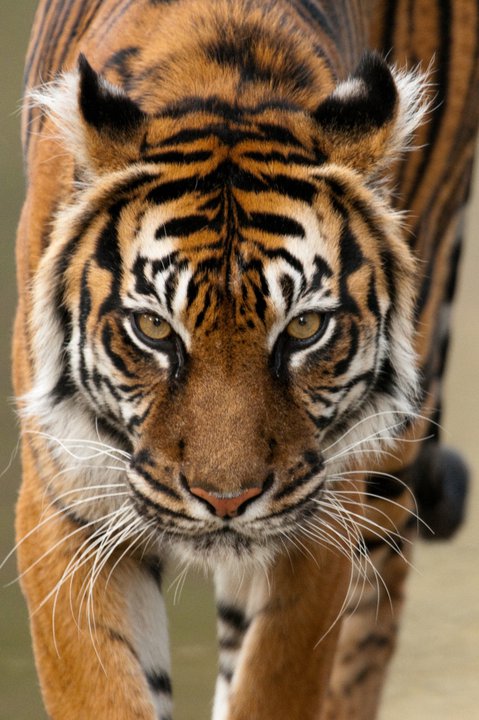National Zoo Mourns Death of Elderly Sumatran Tiger
Veterinary staff at the Smithsonian’s National Zoo humanely euthanized a 19-year-old female Sumatran tiger, Soyono, this morning. A final pathology report may provide more information, but her health had been in decline for several weeks.
In early October, Soyono—affectionately known as Soy—began to exhibit signs of aging that are common among geriatric mammals. Keepers noticed that she walked more slowly and seemed to have trouble with her balance. Zoo veterinarians monitored Soy’s health and administered medication to alleviate the symptoms associated with spondylosis—a degenerative disorder of the spine that can create abnormal pressure on the nerves. Animal care staff made the decision to euthanize Soy when they observed that her health and quality of life continued to steadily decline despite treatments.
Soyono was born at the National Zoo June 14, 1993. Because her mother was wild-caught, Soy’s genes were not well-represented in the North American population, making her a valuable breeder. She participated in the Association of Zoos and Aquariums’ Species Survival Plan for Sumatran tigers, a program that determines which animals to breed by considering their genetic makeup, nutritional and social needs, temperament and overall health. Soy birthed three litters of cubs and with her mate, Rokan, produced seven offspring altogether. The cubs—born in 2001, 2004 and 2006—were transported to North American and international zoos for breeding, research and to act as ambassadors for their species. The average lifespan for a wild Sumatran tiger averages 15 years; in human care, these cats can live into their late teens or early 20s.
The International Union for Conservation of Nature lists the Sumatran tiger as critically endangered; in total, only 700 of these great cats are left in the world. Of those, only 400 remain in the forests of their native Indonesia, due in part to heavy deforestation in areas where housing development and palm oil plantations are prevalent. Poaching continues to be a major threat to Sumatran tiger populations as well. To help combat these threats, the National Zoo’s Conservation Biology Institute is a member of the Global Tiger Initiative, which works to double the number of wild tigers by 2022.
National Zoo visitors can see two Sumatran tigers at the Great Cats exhibit: a young female tiger, Damai, and male tiger, Kavi.
# # #
SI-494-2012
Jen Zoon
301-908-3102


